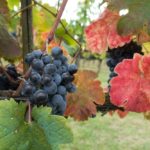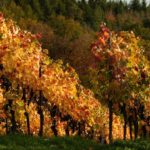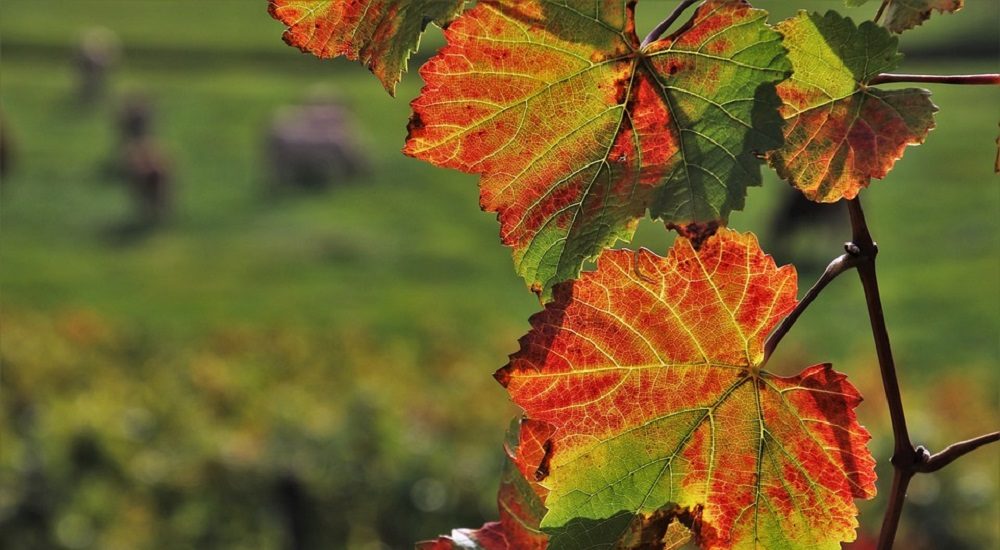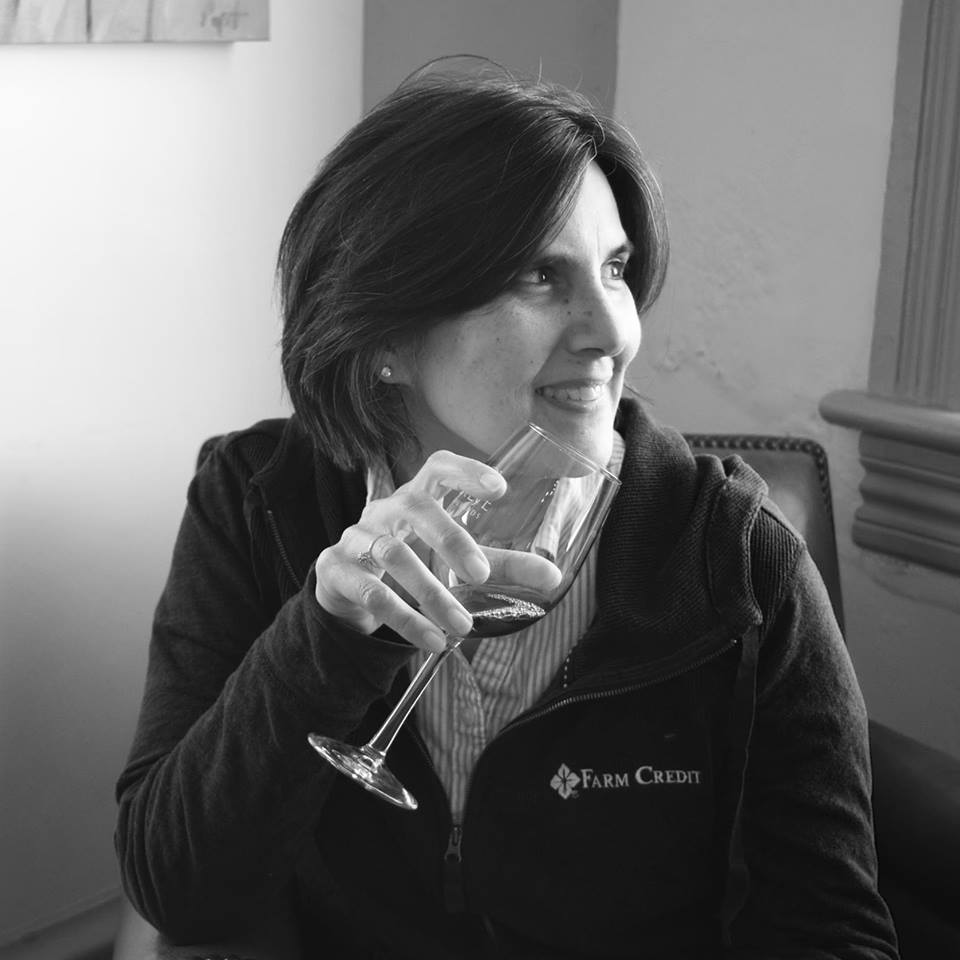Harvest
 Heavy, green walnuts plunk to the ground. In the woods, splashes of rose, orange, and yellow testify fall has arrived and peak week is around the corner.
Heavy, green walnuts plunk to the ground. In the woods, splashes of rose, orange, and yellow testify fall has arrived and peak week is around the corner.
Fall—that snap of cold, that spicy hint of wood smoke, and those warm colors under crystalline skies. To winemaker John, fall means harvest, the culmination of his wine growing season.
The 2017 vintage opened as a nail-biter: a balmy winter pushed early bud break, followed by several frost warnings, most of which we managed to dodge. June brought plenty of heat, but July turned wet. August dried up nicely, but couldn’t decide if it wanted to be hot or cool. Then along came the September hurricanes.
But the strong, well-established vines have a lovely way of surprising us. Yes, it was necessary to harvest selectively, leaving clusters with botrytis (noble rot) on the vine; but we didn’t see or smell any evidence of wine-wrecking sour rot, for which we are thankful. Harvest was compact this year, beginning with Pinot Noir on September 9, and ending with Lemberger on October 7. All our harvested fruit—Pinot Noir, Grüner Veltliner, Chardonnay, Riesling, Traminette, Cabernet Franc, Lemberger—was mostly clean with good sugars, good acidity, and luscious flavors. John is pleased.
 No vineyard job is as festive as harvest. Before it begins, we hook a wagon to our tractor and load it with yellow picking lugs. Extra picking lugs are stacked at the end of the rows. We’ve spaced the rest throughout the rows.
No vineyard job is as festive as harvest. Before it begins, we hook a wagon to our tractor and load it with yellow picking lugs. Extra picking lugs are stacked at the end of the rows. We’ve spaced the rest throughout the rows.
“Climb on!” John calls, like he’s manning an amusement park ride. My daughters and I jump (or they jump while I hoist myself) onto the wagon to head to the vineyard.
We space yellow lugs down long rows under vines heavy with fruit. The pickers will snip the clusters with picking sheers and drop them into these lugs, leaving them under the vines for us to gather later. Our harvesters listen to Mariachi or Ranchera music as they work, laughing and chattering amongst themselves. It’s all in Spanish, and we can only make out a fraction of what they say. When the work is done, John (they call him Jefe, boss) shares a beer with them as he cuts the checks. He takes this opportunity to work on his Spanish, a language he butchers with his North Carolina accent. The Mexicans find this hilarious. John regularly butchers English, too.
“Dos cervezas, Jefe.”
John smiles. He understands. He hands out two more beers. He gets great pleasure out of these lessons.
When the pickers are close to finished, my daughters and I jump onto the wagon and head back to the vineyard. The lugs, now weighty with fruit, justify their name as we lug them onto the wagon to be carried to the winery. This is backbreaking work (at least for me it is) that sometimes isn’t completed until dusk. We offload the lugs onto pallets or dump them directly into the press (for whites) or de-stemmer (reds).
John is pleased with the brix (sugar level) of his Cabernet Franc.
Here’s a story in pictures about processing this vintage of Cabernet Franc….
Cabernet Franc is first de-stemmed into one-ton bins. We add oak dust to extract color, add tannin, enhance fruit, and reduce vegetal notes. Next we sprinkle the fruit with a pectin enzyme to help break down the skins and extract more color.
Last, we add sulfur to prevent undesirable yeasts from initiating fermentation.
 Ten bins of Cabernet Franc fruit now line the winery. The fruit is whole-berry, cold soaked for three days to gently macerate the fruit and, again, extract color. Then we add an Italian yeast specifically designed for Cabernet Franc. (The book of yeasts is encyclopedic.)
Ten bins of Cabernet Franc fruit now line the winery. The fruit is whole-berry, cold soaked for three days to gently macerate the fruit and, again, extract color. Then we add an Italian yeast specifically designed for Cabernet Franc. (The book of yeasts is encyclopedic.)
During fermentation, the yeast converts sugar to alcohol, releasing carbon dioxide. The bubbling gas pushes a cap of fruit to the surface, and several times a day we must punch down this cap so the juice gets maximum contact with the skins and seeds, extracting color and tannin.
After about eight days, the yeast has converted all the sugars to alcohol. The juice is now dry wine (wine without sugar.) We pump the loose wine below the cap into a tank, leaving a whole lot of liquid still sloshing in the bin with the skins. This we must scoop with five-gallon buckets into a mechanical Willmes press, which squeezes every last drop of wine from the skins.
After the sediment has settled, the wine is moved from the tanks to barrels for a secondary fermentation, called malolactic fermentation—the conversion of apple-like malic acid to milk-like lactic acid.
Cabernet Franc will age in barrels for another 1-2 years, slowly softening and developing its berry, spice, and tobacco character, before it’s finally bottled, labeled, and gracing dinner tables across Virginia and beyond.


